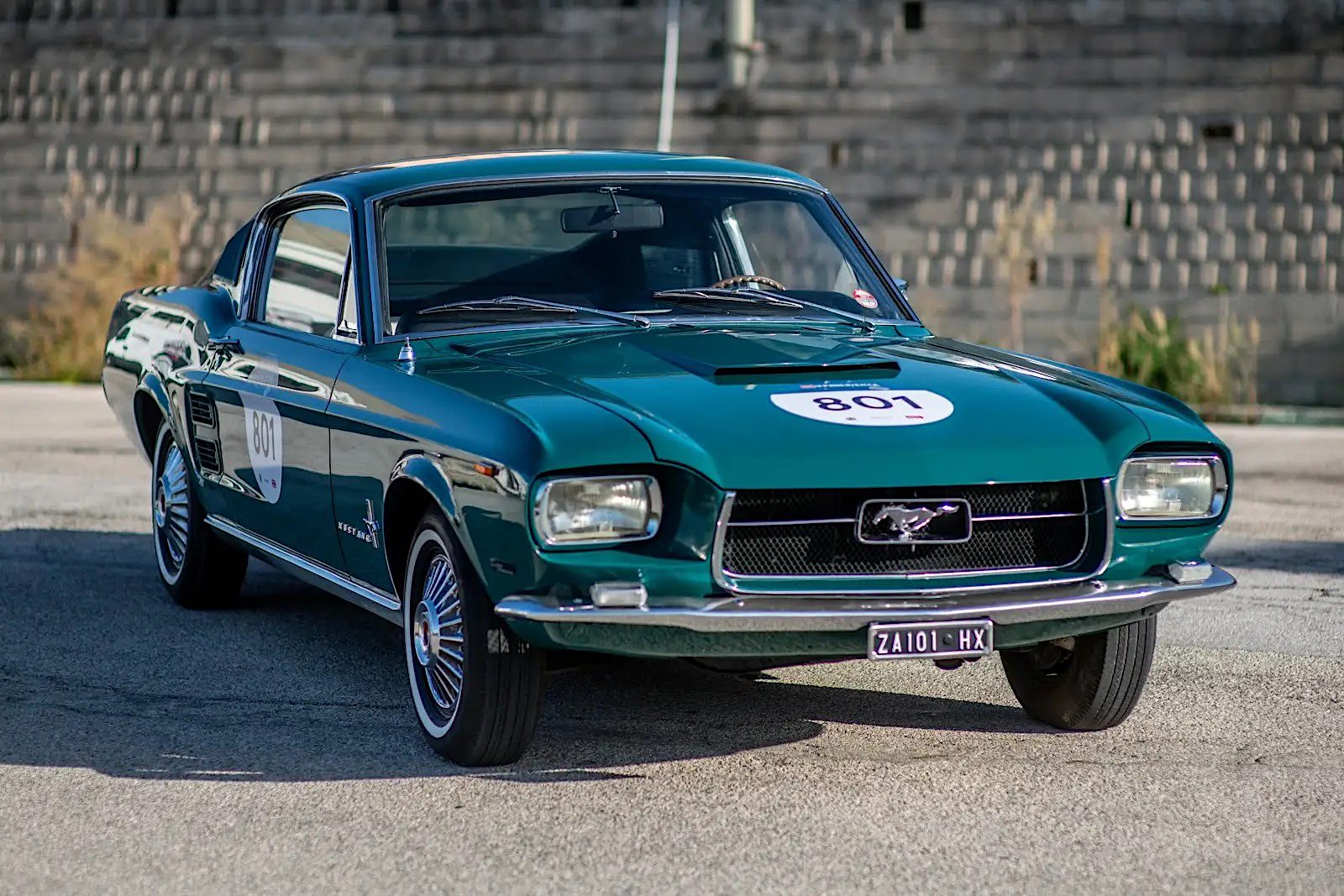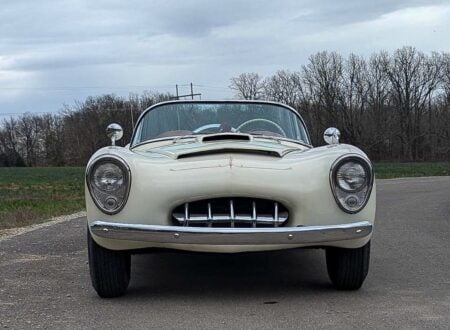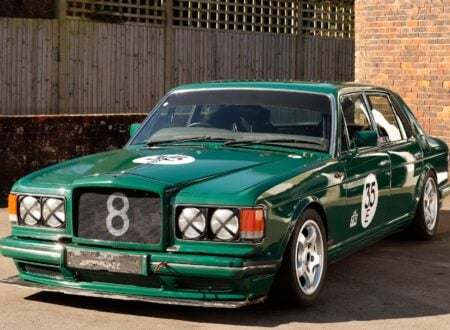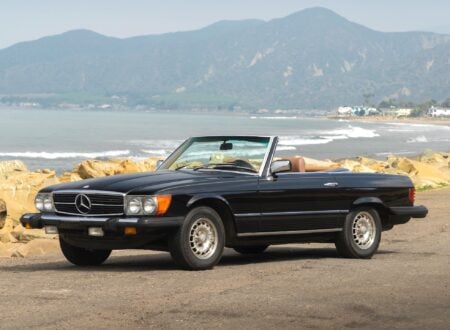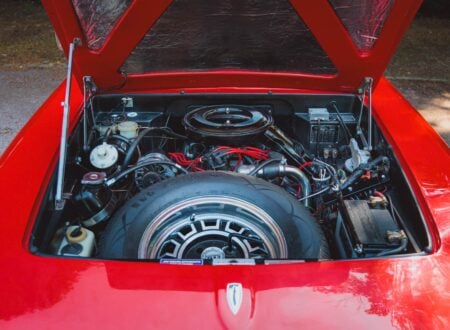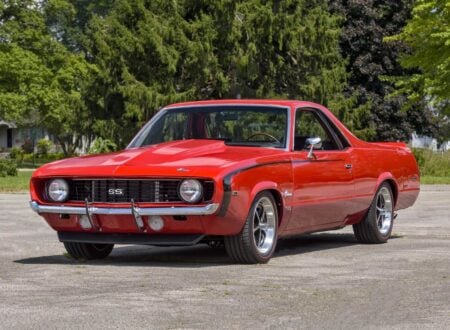This is one of two examples of the 1967 Ford Mustang GT Zagato Elaborazione that were built. It’s a ’67 Mustang that was shipped off to Carrozzeria Zagato in Milan, Italy for a series of modifications – turning into the car you see here today.
The 1967 Ford Mustang fastback is already considered to be one of the best-looking American cars of the time by many, so it took no small amount of courage for the team at Zagato to take a swing at modifying it to their own design. It might not be to everyone’s tastes, but it is unabashedly Italian.
Fast Facts: The Ford Mustang GT Zagato Elaborazione
- Tise 1967 Ford Mustang GT Zagato Elaborazione is one of only two ever built. Based on a fastback GT model, it was shipped to Carrozzeria Zagato in Milan, where it received series of unique Italian styling changes. These included custom front end bodywork with a narrowed grille, rectangular headlights, and some bespoke interior touches that set it apart from its mainstream American counterpart.
- Zagato was founded in 1919 by Ugo Zagato, it applied aviation principles to automotive design, focusing on lightweight, aerodynamic aluminum bodies. Early success came through partnerships with Alfa Romeo, with Zagato-bodied models performing well in races like the Mille Miglia and Targa Florio, building a reputation for both speed and style.
- Through the 1950s and 60s, Zagato collaborated with marques including Aston Martin, Fiat, Lancia, and Maserati. Iconic designs from this period include the double-bubble-roofed Alfa Romeo Giulietta SZ and the Aston Martin DB4 GT Zagato. The firm prioritized limited-production runs, which helped it survive when many other coachbuilders folded.
- Under the leadership of Andrea Zagato from 1991, the firm expanded its scope to include design consultancy and branding while continuing to produce one-offs and high-end collector cars. Modern collaborations have included low-volume runs with Aston Martin and Alfa Romeo.
History Speedrun: Zagato
Zagato was founded in 1919 in Milan by Ugo Zagato, a trained aircraft engineer who would soon become famous for applying aviation engineering principles to automotive design. Fresh from working at Pomilio in Turin during World War I, Ugo established Carrozzeria U. Zagato & C. with the intent of building lightweight, aerodynamic bodies using aluminum rather than the heavier materials, typically steel, common in coachbuilding at the time.
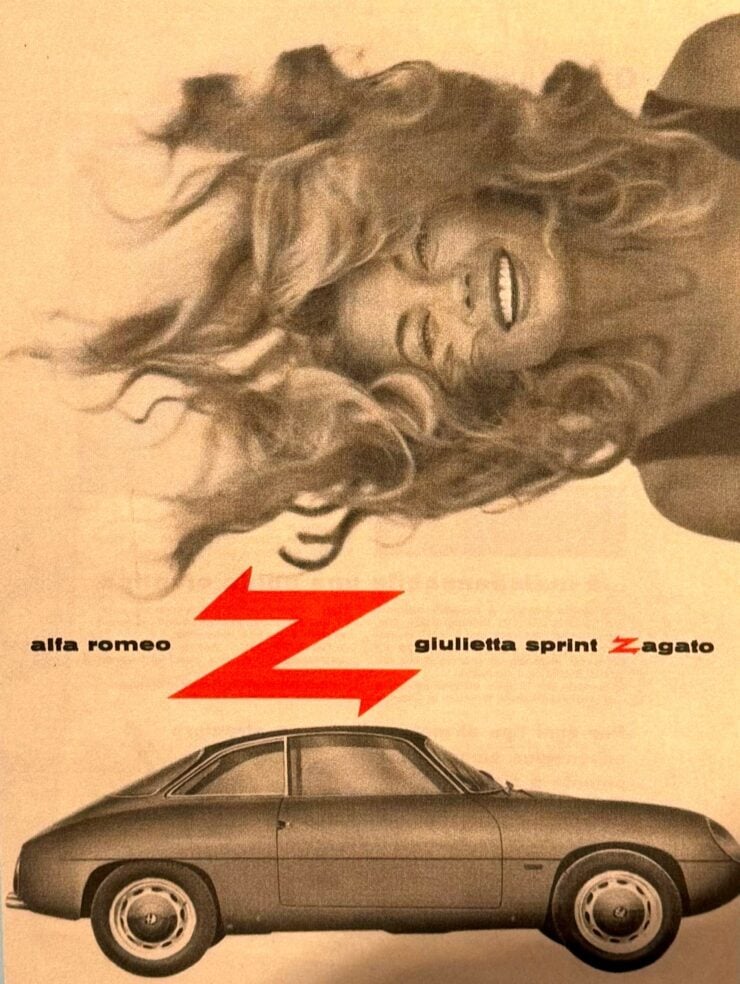

Zagato’s early reputation was built on its work with Alfa Romeo during the 1920s and 1930s. One of the most significant early successes was the 1925 Alfa Romeo RLSS with its lightweight Zagato body, followed soon after by the 6C 1500 and 6C 1750 models.
These cars didn’t just look sleek, they won races, especially long-distance endurance events where weight and aerodynamics made all the difference. Zagato-bodied Alfas were regular contenders and victors in the Mille Miglia, Targa Florio, and the Spa 24 Hours.
The firm survived World War II and picked up momentum again in the 1950s and early 1960s, a golden age of sorts. This era brought partnerships with Ferrari, Fiat, Maserati, Lancia, and Aston Martin. Zagato’s signature “double bubble” roof – a solution to increase headroom while preserving a low profile for aerodynamics – became a key styling hallmark.
Notable designs from this era include the Alfa Romeo Giulietta SZ and the Aston Martin DB4 GT Zagato, the latter now one of the most valuable British sports cars of all time and both are widely regarded to be among the most beautiful cars of the era.
Unlike some rivals, Zagato never turned into a mass-production bodybuilder. The company kept its operation deliberately small, producing limited runs and bespoke commissions. That niche positioning allowed it to stay nimble as the traditional coachbuilding industry faded in the 1970s and 1980s and almost collapsed completely.
Many other Italian carrozzieri closed or were absorbed into larger firms, but Zagato pivoted – it began offering design consultancy, industrial design services, and even branding advice, all while continuing to build limited-edition collector models.
In the 1990s and 2000s, Zagato celebrated its heritage with a series of re-imagined classics – collaborations resumed with Aston Martin, resulting in new Zagato versions of the DB7, V12 Vanquish, and later the V12 Vantage and DBS.
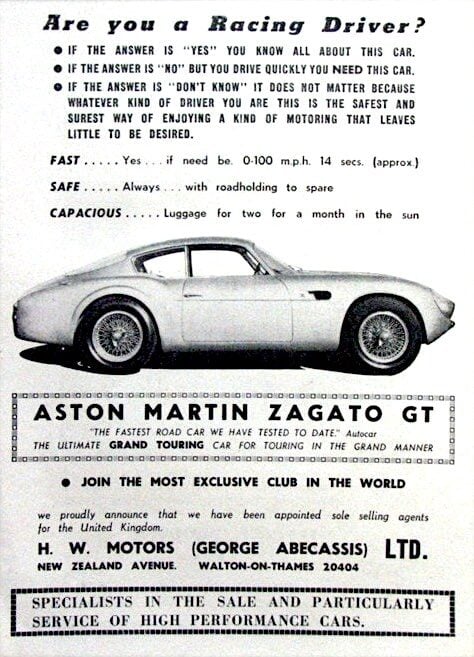

The company also partnered again with Alfa Romeo, much to the delight of the Alfisti, on the SZ and RZ, two sharp-edged models that split opinions but stuck to the firm’s love-it-or-leave-it design philosophy.
Andrea Zagato, Ugo’s grandson, took over in 1991 and shifted the company more toward strategic design and brand partnerships, helping it stay relevant in a rapidly changing automotive landscape. Under his leadership, Zagato expanded into electric prototypes and concept one-offs while continuing to serve collectors with much-sought-after continuation models and high-end commissioned builds.
Zagato remains one of the last true coachbuilders operating independently in Italy. Much more than just an automotive styling house, its legacy lies in applying performance engineering principles to automotive design – without losing sight of that rich vein of Italian style that runs through the heart of the company.
The Ford Mustang GT Zagato Elaborazione
The car you see here is one of two Ford Mustang GT fastbacks that were modified when new by Carrozzeria Zagato in Italy. The cars were shipped to Milan where they were given a series of styling revisions by the world-famous team.
These modifications included the fitment of bespoke front bodywork with a hood scoop, a narrowed grille, and rectangular Carello headlights replacing the circular originals. This car was also repainted from Wimbledon White to Holly Green and the front seats were retrimmed in two-tone upholstery.
Zagato Elaborazione badges were then added to the front fenders, and the turn signal indicators were mounted atop the front bumper. The car left the Ford factory fitted with the 289 cubic inch Challenger Special V8 which was equipped with a four-barrel carburetor, and power is sent back through a 4-speed manual transmission.
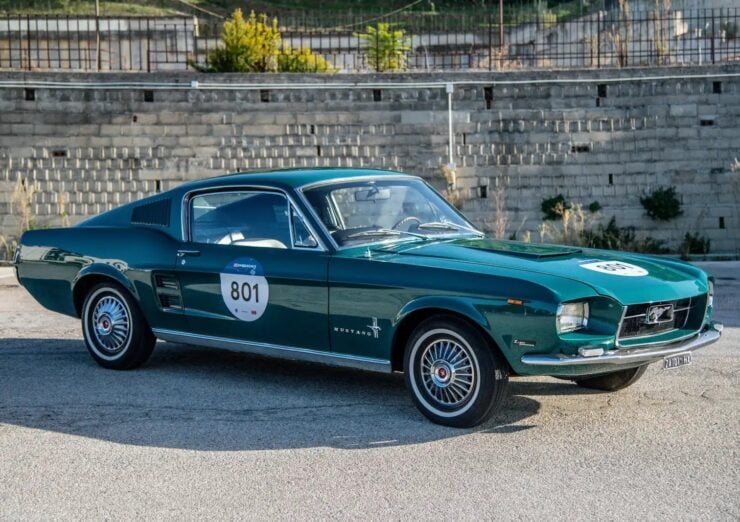

The design changes may not be to everyone’s tastes, Zagato was faced with a challenge here as the factory-stock 1967 Mustang fastback was already a rather handsome car. While it may not be appreciated by all, there are plenty who love the Zagato design, and as a result the two Zagato Elaborazione Ford Mustangs are highly collectible.
This example is now being offered for sale out of Chieti, Italy with a FIVA identity card and Italian registration. If you would like to read more about it or place a bid you can visit the listing here.
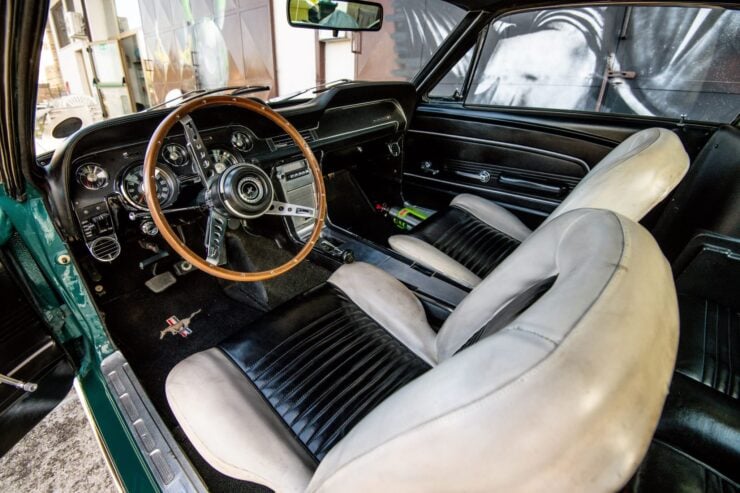
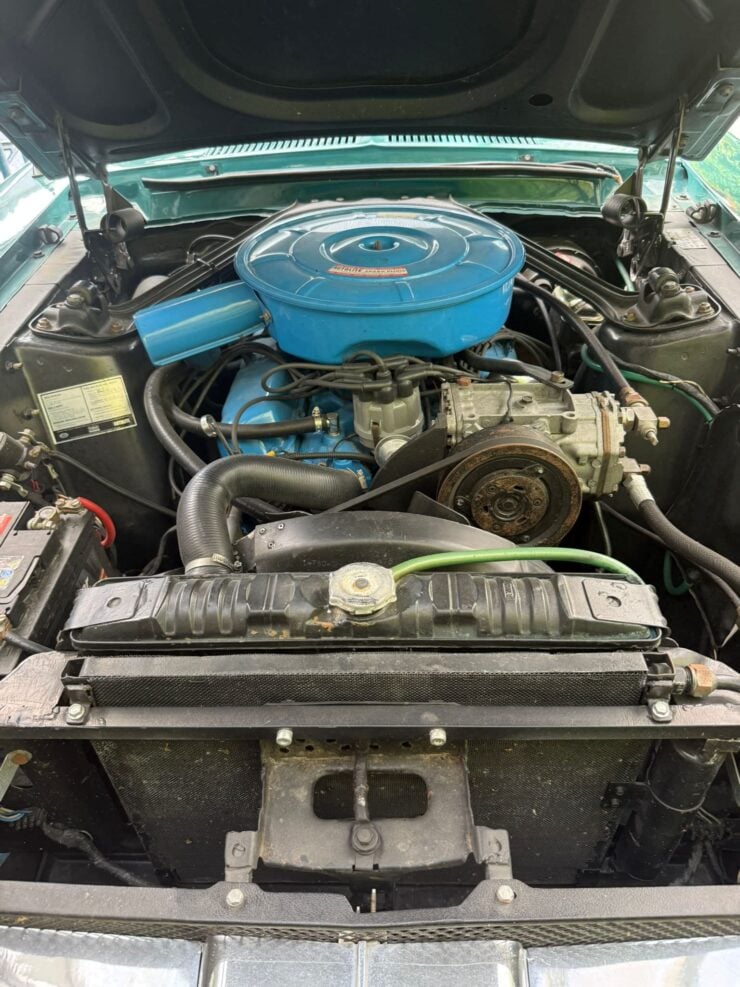
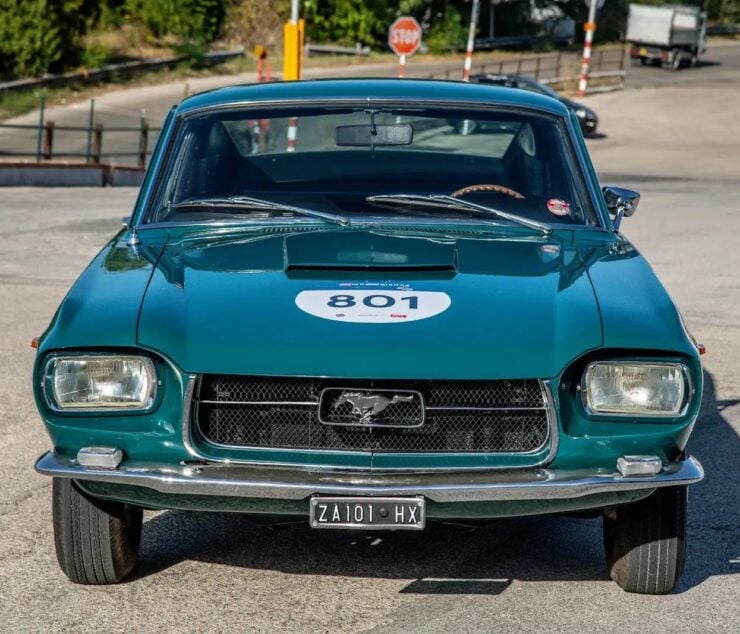
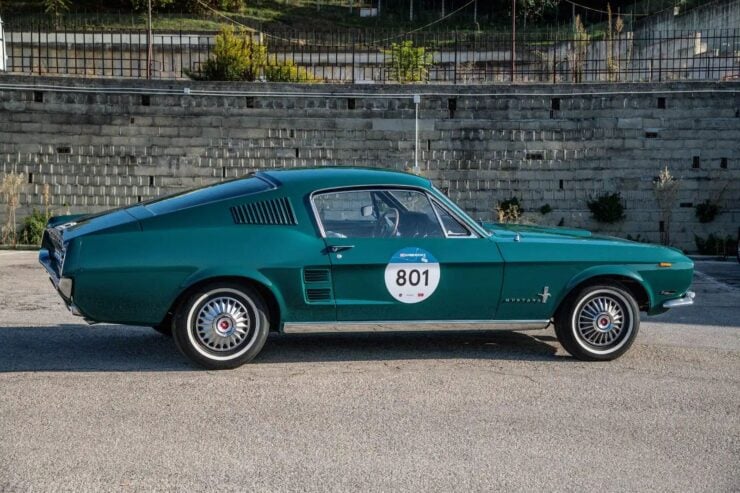
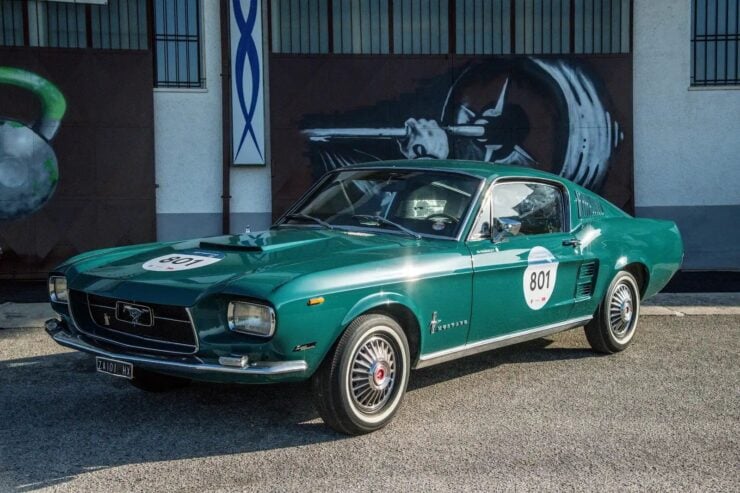
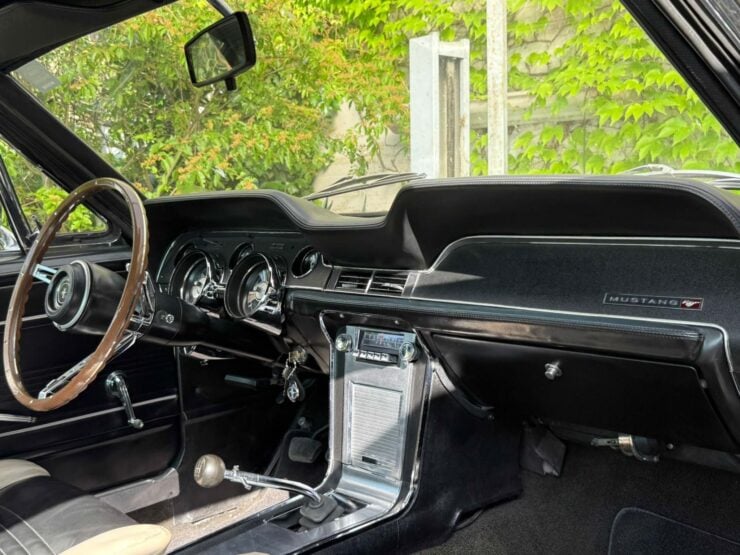
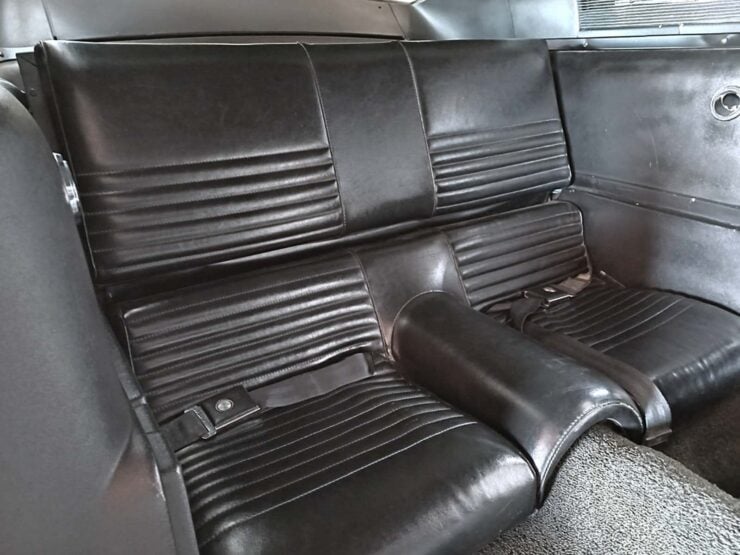
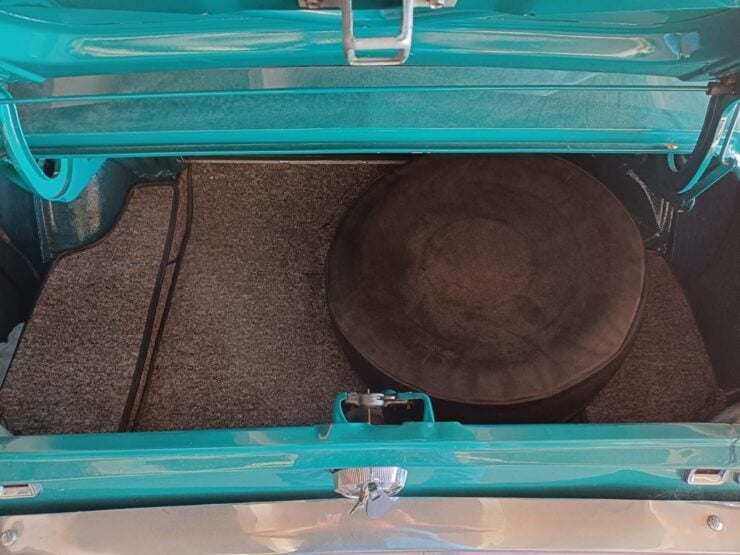
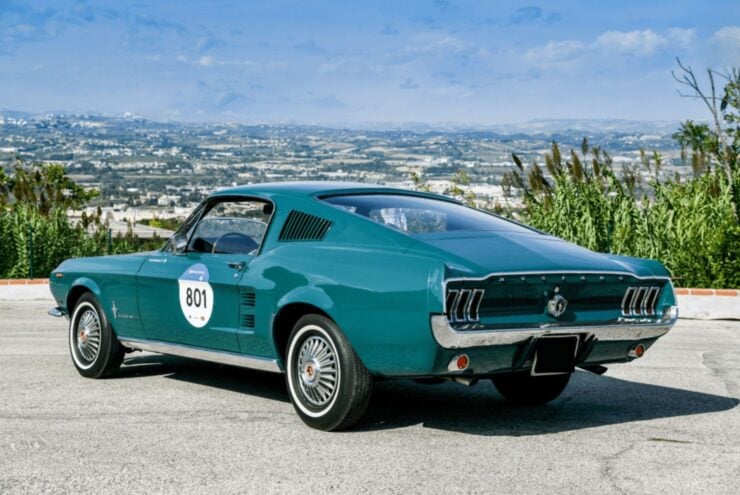
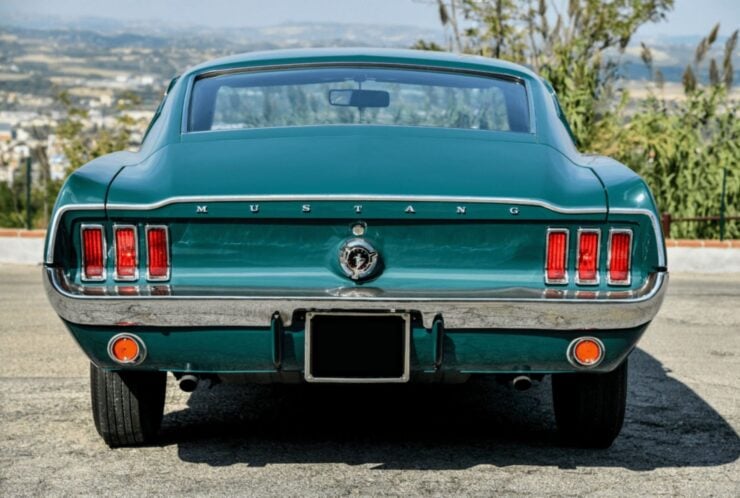
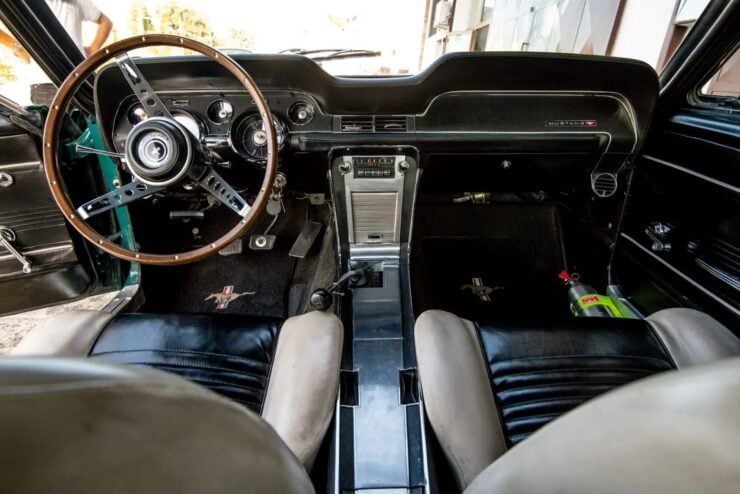
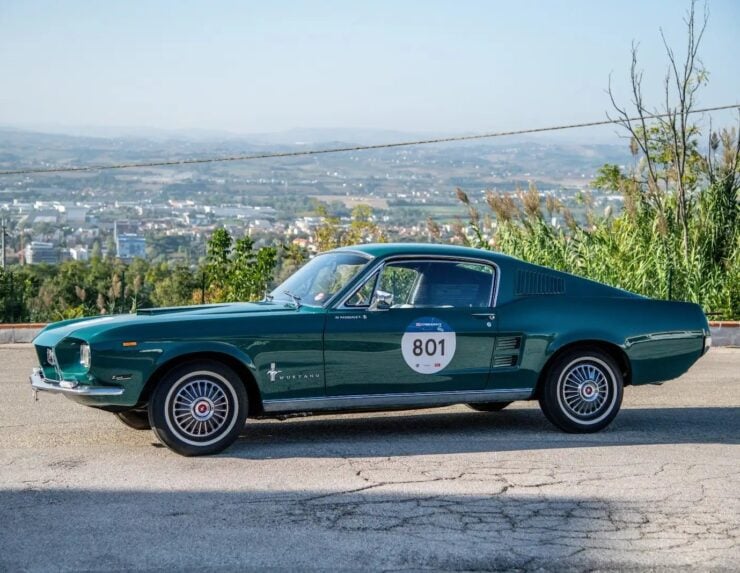
Images courtesy of Bring a Trailer

